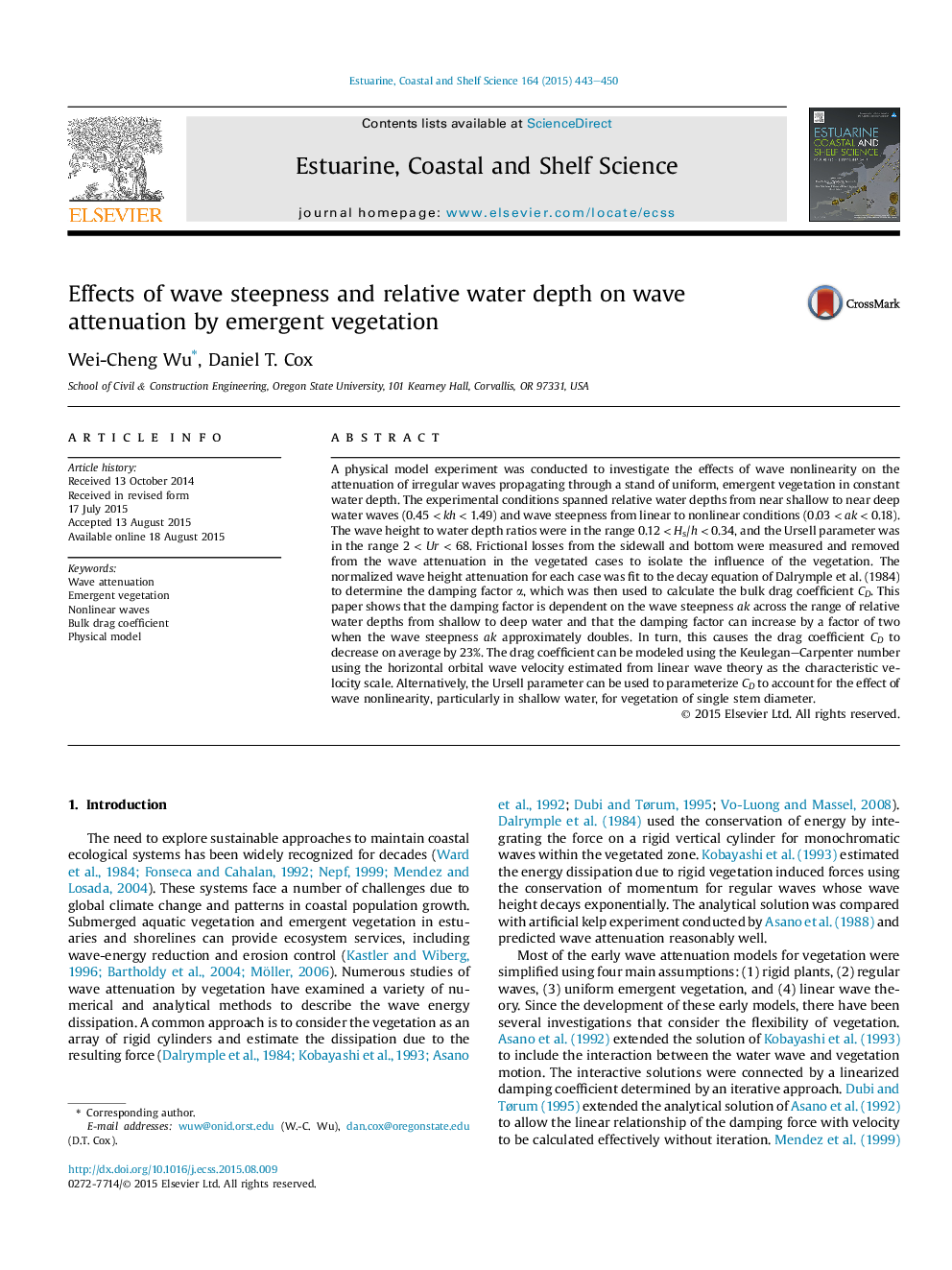| Article ID | Journal | Published Year | Pages | File Type |
|---|---|---|---|---|
| 6384735 | Estuarine, Coastal and Shelf Science | 2015 | 8 Pages |
Abstract
A physical model experiment was conducted to investigate the effects of wave nonlinearity on the attenuation of irregular waves propagating through a stand of uniform, emergent vegetation in constant water depth. The experimental conditions spanned relative water depths from near shallow to near deep water waves (0.45 < kh < 1.49) and wave steepness from linear to nonlinear conditions (0.03 < ak < 0.18). The wave height to water depth ratios were in the range 0.12 < Hs/h < 0.34, and the Ursell parameter was in the range 2 < Ur < 68. Frictional losses from the sidewall and bottom were measured and removed from the wave attenuation in the vegetated cases to isolate the influence of the vegetation. The normalized wave height attenuation for each case was fit to the decay equation of Dalrymple et al. (1984) to determine the damping factor α, which was then used to calculate the bulk drag coefficient CD. This paper shows that the damping factor is dependent on the wave steepness ak across the range of relative water depths from shallow to deep water and that the damping factor can increase by a factor of two when the wave steepness ak approximately doubles. In turn, this causes the drag coefficient CD to decrease on average by 23%. The drag coefficient can be modeled using the Keulegan-Carpenter number using the horizontal orbital wave velocity estimated from linear wave theory as the characteristic velocity scale. Alternatively, the Ursell parameter can be used to parameterize CD to account for the effect of wave nonlinearity, particularly in shallow water, for vegetation of single stem diameter.
Related Topics
Physical Sciences and Engineering
Earth and Planetary Sciences
Geology
Authors
Wei-Cheng Wu, Daniel T. Cox,
